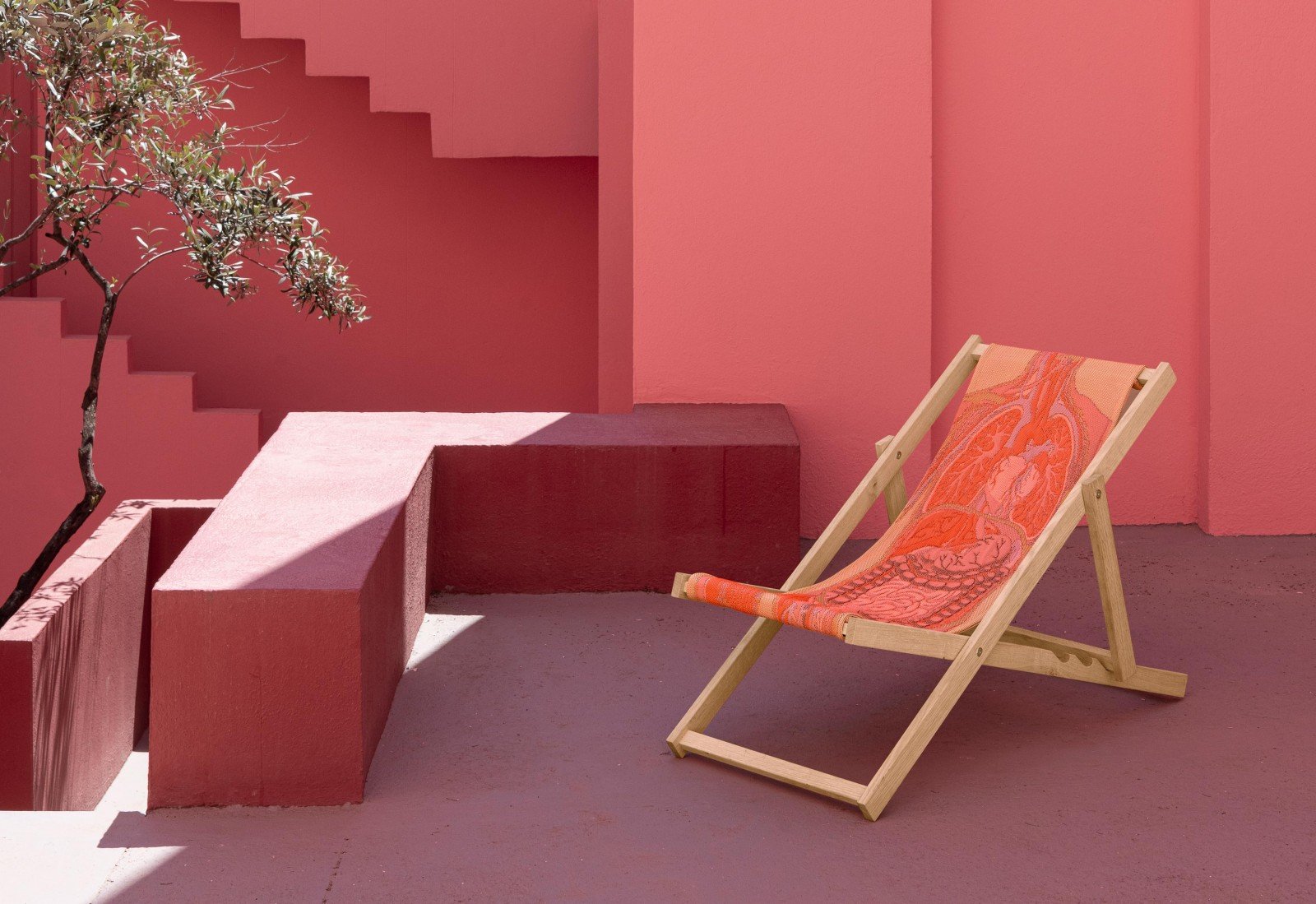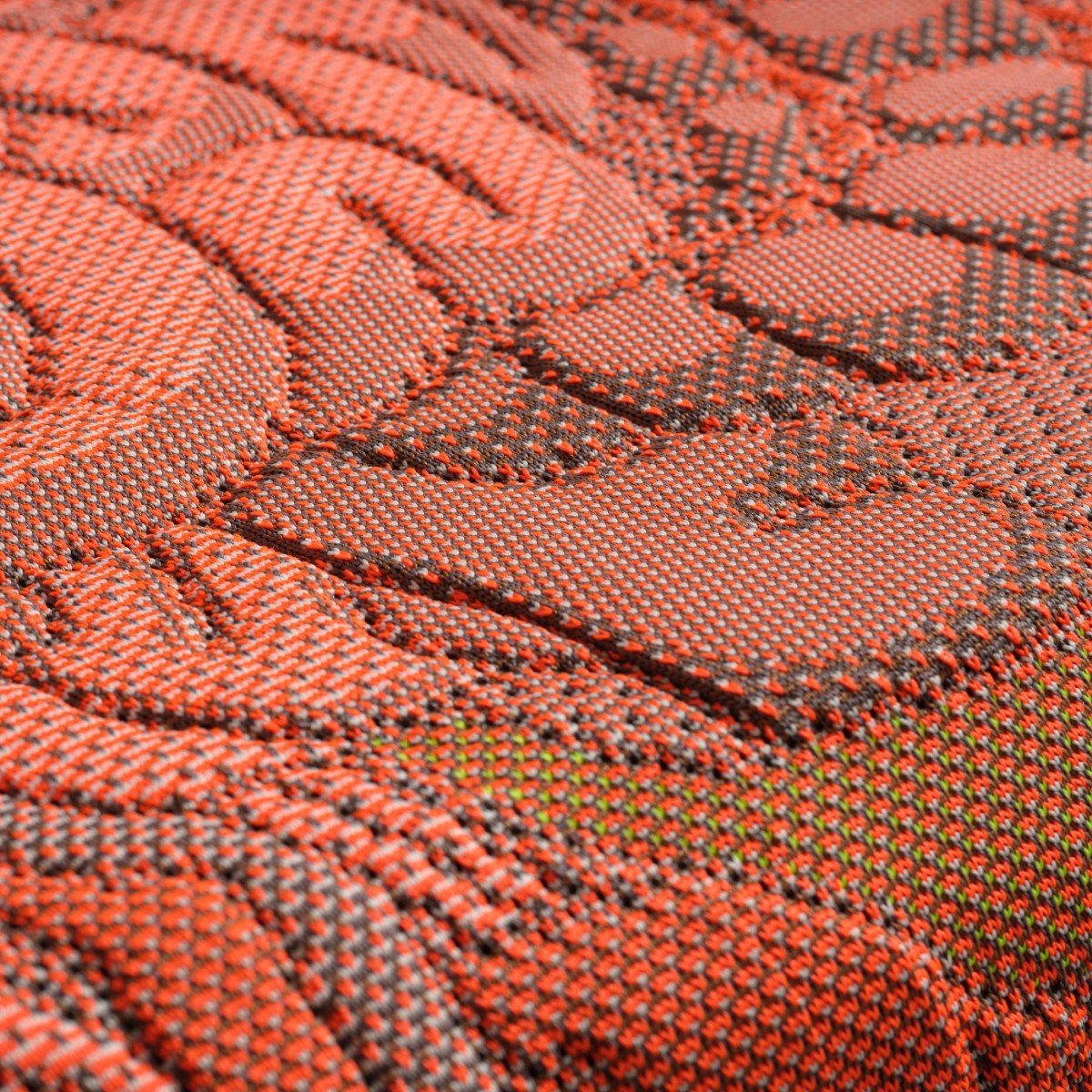Copywriting. Interviewer.
Byborre Create Case Study: 'Anatomic Chair' by Nynke Tynagel and inCC
When art and furniture collide
Initiated by furniture experts Object Embassy and operating on the verge of art and design, Amsterdam-based label inCC: partnered with BYBORRE and world-renowned graphic artist Nynke Tynagel to heighten their ceiling of design with the release of the ‘Anatomic Chair’ – a limited edition piece that debuted at this year’s Salone del Mobile. Reimagining the archetypical traditional beach chair, this exclusive release is limited to 600 pieces worldwide and looks to bridge the gap between art and furniture in a spectacular display of design, craftsmanship and innovation.
By opening up their ecosystem of suppliers and unparalleled knowledge of knit technology, BYBORRE gives access to the tools necessary to help Nynke and inCC:’s vision become a reality. With BYBORRE engineering the canvas, Nynke working the paintbrush and inCC: meticulously crafting the chairs, all three parties joined forces to create a unique piece that not only pushes the boundaries of creativity but is uncompromisingly functional and responsible too. A unique take on a century-old design, Nynke and inCC: provide a lens to look into the future of art and furniture, and how the two worlds can coincide together in harmony.
With work commencing mid-late December 2021, it would not be long before inCC:’s idea would start to formulate into reality. With all three parties involved being on each other’s doorsteps in Amsterdam, it was “only a matter of time” before both BYBORRE, Nynke and inCC: would come together.
Right from the get-go, both BYBORRE and inCC: shared synergies in their thought process with the fundamentals of what was needed, such as functionality and responsibility within production. Bing van der Lande, founder of inCC:, describes the importance of making conscious decisions when it comes to the footprint of their products, telling us “It is something that is rooted within the core of our company. We believe in a world where resources are scarce, we should take responsibility to make a positive impact on the world where we can.”
Even though these factors were crucial, it was almost a subconscious thought for both BYBORRE and themselves. It was the expected, not the nice-to-have, and it would be on this foundation that the project was built upon. As well as this, the yarns were incredibly traceable and transparent, having DNA tags attached to them.
Once design and textiles would be signed off, the sampling procedure was “straight forward” Bing tells us, and even going further to describe the speed of it all being “a matter of days”. With BYBORRE’s own on-site sampling lab it made the whole process extremely streamlined, and made it incredibly easy to review and reiterate if needed.
Things were not without their challenges though, Bing tells us. With something so innovative and complex as this project, there were numerous obstacles, although “none that we weren’t able to overcome”. With both BYBORRE and Object Embassy being seasoned professionals in their industry, no detail would be overlooked. For instance, when the textiles were created and underwent steaming to achieve their 3D elements, some were subject to shrinking. To avoid this, things would be pushed so far that they are “even looking into the humidity in the factories where the textiles are being produced so we can ensure that the exact dimensions can be achieved”. It is these fine details that set the project apart from the rest, ensuring no stone was left unturned in the process of creating this incredibly high-quality piece of art.



